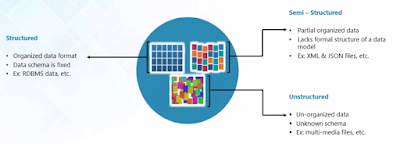Sqoop Tools:
Sqoop is a collection of related tools. To use Sqoop, we should specify the tool want to use and the arguments that control the tool.
Syntax:
sqoop tool-name [tool-arguments]
To display a list of all available sqoop tools:
Command:
sqoop help
Note:
Goodness is we can display the help for a specific tool by entering:
sqoop help (tool-name) or sqoop tool-name) --help
Example:
sqoop help import or sqoop import --help.
To perform the operation of each Sqoop tool:
mano@Mano:~$ sqoop import --help
usage: sqoop import [GENERIC-ARGS] [TOOL-ARGS]
So, the tool-arguments are divided into two categories
1.[GENERIC-ARGS]==> These are controls the configuration and Hadoop server settings
Note:
comes after the tool name but before any tool-specific arguments (such as --connect,--username etc.,).
generic arguments are preceeded by a single dash character (-),
2.[TOOL-ARGS]==>These are related to sqoop tool which we use
Note:
tool-specific arguments start with two dashes (--), unless they are single character arguments such as -P.
Can be done through Options Files to Pass Arguments:
Step 1: Create a file on local storage area, which arguments options to pass for sqoop
Step 2: Pass the options file using --options_file argument
Syntax:
sqoop --options-file file_path;
Example:
I have used to inspect the database using eval tool
options_file.txt
#
# Options file for Sqoop import
#
eval
--connect
jdbc:mysql://localhost/sqoop_test
--username
root
--password
root
Execution:
Output:
Please follow the link for further ==>Sqoop_Page 3
Sqoop is a collection of related tools. To use Sqoop, we should specify the tool want to use and the arguments that control the tool.
Syntax:
sqoop tool-name [tool-arguments]
To display a list of all available sqoop tools:
Command:
sqoop help
Note:
Goodness is we can display the help for a specific tool by entering:
sqoop help (tool-name) or sqoop tool-name) --help
Example:
sqoop help import or sqoop import --help.
To perform the operation of each Sqoop tool:
mano@Mano:~$ sqoop import --help
usage: sqoop import [GENERIC-ARGS] [TOOL-ARGS]
So, the tool-arguments are divided into two categories
- [GENERIC-ARGS}
- [TOOL-ARGS]
1.[GENERIC-ARGS]==> These are controls the configuration and Hadoop server settings
Note:
comes after the tool name but before any tool-specific arguments (such as --connect,--username etc.,).
generic arguments are preceeded by a single dash character (-),
2.[TOOL-ARGS]==>These are related to sqoop tool which we use
Note:
tool-specific arguments start with two dashes (--), unless they are single character arguments such as -P.
Can be done through Options Files to Pass Arguments:
Step 1: Create a file on local storage area, which arguments options to pass for sqoop
Step 2: Pass the options file using --options_file argument
Syntax:
sqoop --options-file file_path;
Example:
I have used to inspect the database using eval tool
options_file.txt
#
# Options file for Sqoop import
#
eval
--connect
jdbc:mysql://localhost/sqoop_test
--username
root
--password
root
Execution:
Output:





























